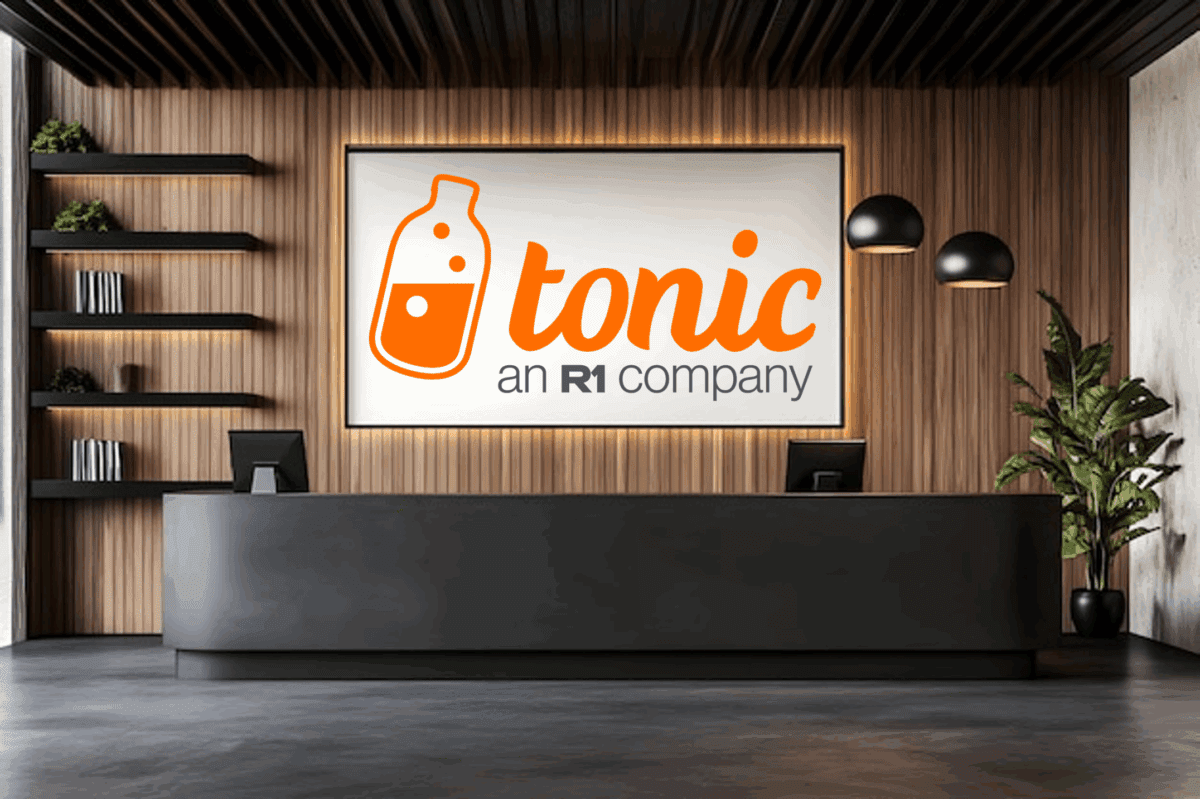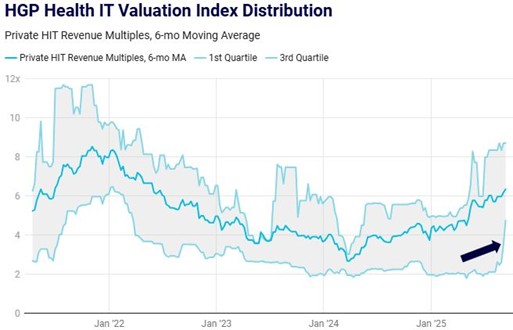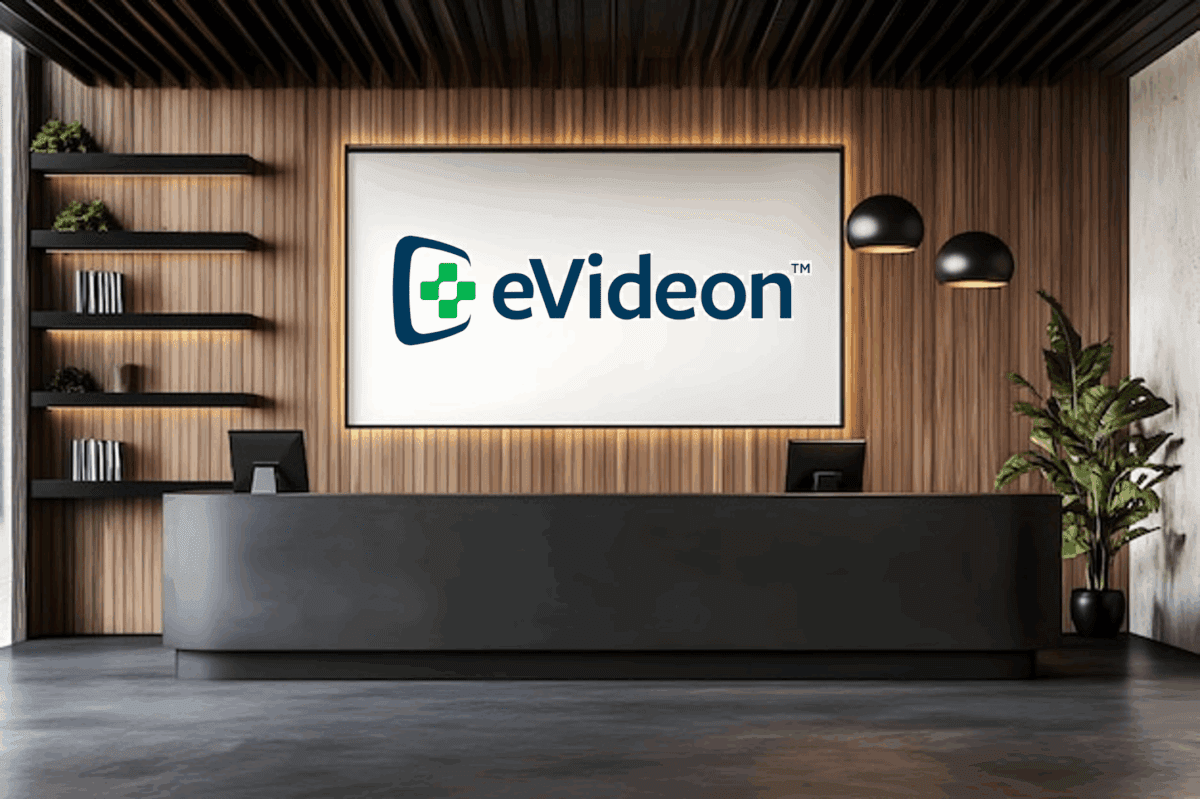
At HGP, we’ve advised and made personal investments in 100+ emerging growth Health IT companies with revenue between ~$5-20 million. We’re often asked about the target financial metrics that a company of this size should aim to achieve to optimize valuation, which we’ve outlined in the table above. While we hardly are suggesting that Companies must be in the “Best” category to receive a great valuation during an investment or acquisition transaction, we hope this table will provide directional guidance on targets to aspire towards. The key considerations to keep in mind are:
- Recurring Revenue: High recurring revenue is one of the most basic criteria for driving value. The quality of recurring revenue can’t be truly assessed without incorporating some of the other elements in the table, such as revenue retention and customer concentration. However, as a generalization, investors seek and place a higher value on revenue that is diversified and predictable vs lumpy and one-time in nature. Ideally, revenue recognition will mirror cash collections to reduce differences caused by GAAP accounting from policies such as ASC 606.
- Revenue Metric: All things equal, contracted revenue is of higher value than non-contracted revenue. The higher confidence that one has in the conversion of contracted revenue to recognized revenue, the greater credit will be given for this revenue. In many cases, a buyer will assign full value to contracted (aka, booked) revenue, which means that the same multiple may be applied against recognized and contracted revenue. In cases where contracted revenue involves one large account or implementations that extend over a longer time period, less credit may be given and investors may prefer to subject this revenue to a contingent payout, such as an earnout.
- Revenue Growth: There is no stronger corollary to valuation multiples than revenue growth. In each of our biannual investor and corporate surveys, the number one metric that investors seek through acquisition or investment is growth. Like these other criteria, revenue growth may be codependent on other metrics, such as revenue retention. Up until recently, the mindset was “growth at all costs” but investor sentiment recently shifted to “growth at measured costs”. It’s worth noting that investors will target a higher growth than strategic buyers because they need the organic growth story while strategics can bring that growth to bear through their strategic value.
- Gross Margin: Since most emerging growth companies are not driving significant profitability on the bottom line, gross margin may be the best and only metric to assess scalability and future potential for profitability. For pure SaaS companies, the over/under gross margin tends to be ~80%. In health IT, such a margin may be harder to achieve since many enterprise systems require smaller vendors to pay a “connectivity fee” based on a percentage of revenue to gain access to a provider’s data. For vendors of tech-enabled services, gross margins often land in the 40-60% range.
- Revenue Retention: Gross revenue retention only considers starting revenue minus any lost or downsell revenue. In our experience, a reasonable target gross revenue retention rate is 95%. When dealing with SMB’s, the acceptable rate of gross retention may be lower (but the valuations may be lower as well). Net retention considers gross retention plus offsetting revenue growth from existing customers. A reasonable target net revenue retention is over 100%. Revenue retention is not just a financial metric – sticky customers are happy customers, and customer churn may indicate a problem that extends far beyond revenue. If there is one metric that is an indicator of the long-term viability of a product, retention is that metric. Unlike other metrics, revenue retention can be more binary in nature – that is, it can make or break a transaction.
- Customer Concentration: Customer concentration creates risk for investors and acquirors because it exposes a large share of revenue to a single contract – “don’t put all your eggs in one basket” as the saying goes. To the extent that a company has customer concentration, the risk may be mitigated by long-term contracts, and we advise companies with customer concentration to renew or extend contracts leading up to a transaction. Customer concentration can also manifest itself through reseller relationships. Whenever possible, it is best to contract revenue on your paper versus reseller paper.
- Profitability: A challenge that many companies face is how to balance profitability and growth. The higher the growth rate and gross margin, the more forgiveness there is for losses…to a point. More commentary on this topic can be found in our research piece The Rule of 40 in HIT: Should your Company Prioritize Profitability or Growth.
- Target Revenue: We’re often asked about revenue thresholds for pursuing an M&A transaction. While we’ve seen many successful transactions involving targets with less than $3mm ARR (annual recurring revenue), we typically see ~$3mm revenue as a reasonable threshold for M&A. At over $3mm revenue, a company has generally demonstrated its value proposition, scalability, and repeatability to give a buyer comfort that they can acquire and scale the platform within their organization. The de-risking that comes with size translates to a higher valuation, greater interest from buyers, and a justification of the resources required to consummate a transaction. At approximately $8-10mm ARR, the universe of private equity investors expands to include more growth equity and buyout funds, which give companies greater options to pursue alternatives, and as such, higher valuations.
High quality revenue is generally the #1 metric investors seek when evaluating acquisitions or investments in emerging growth companies. From our table, several metrics converge around quality of revenue, including, based on priority, recurring revenue, revenue growth, revenue retention, customer concentration, and contracted revenue. As companies mature, profitability becomes as important as quality of revenue, and therefore, an eventual path to scalable profitability is critical for companies that intend to grow into mature, larger cap enterprises.


